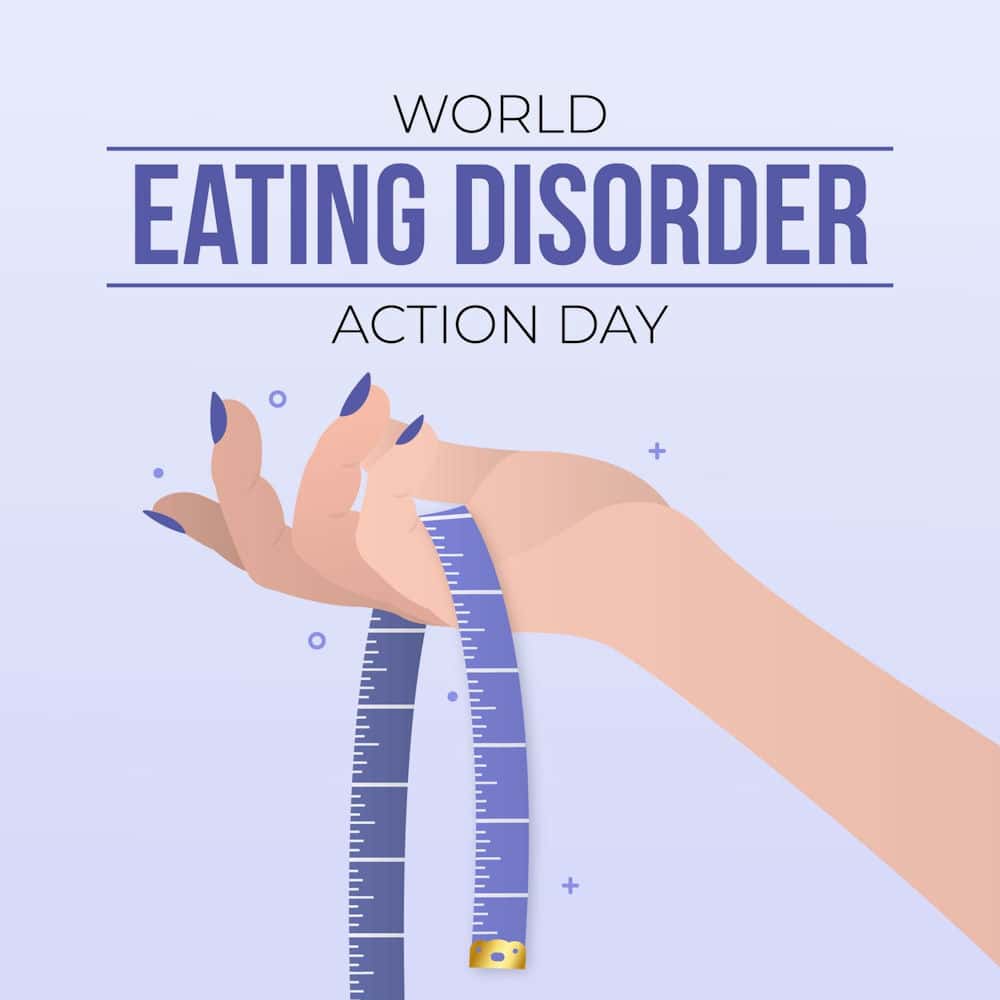
What are some statistics on eating disorders in women?
According to the National Association of Anorexia Nervosa and Associated Disorders, ANAD, around 15% percent of women in the United States will develop an eating disorder by the time they reach their 50s. Of those women, less than a third receive treatment for it.
Each year in the United States, more than ten thousand deaths occur due to eating disorders. That’s around one death an hour.
People with serious eating disorders are more than 10 times more likely to attempt to commit suicide than their non-eating-disordered peers. People with anorexia are 18 times more likely to attempt suicide than those without an eating disorder.
Women are more than 3 times more likely to have anorexia than men. Expanding the category to include bulimia and binge eating disorder, women are still more than twice as likely to have an eating disorder than men are.
 What are the types of eating disorders in women?
What are the types of eating disorders in women?
Eating disorders are serious illnesses that cause severe harm to the minds, bodies, and emotions of women and men. Eating disorders are connected to weight, body image, exercise, and eating, and disproportionately affect women. The most common eating disorders are anorexia, bulimia, and binge eating disorder.
Anorexia
Anorexia is a disorder centered on food restriction and extreme fear of gaining weight. People with anorexia avoid intake of nourishment and are usually underweight as a result of their fear of eating and becoming fat.
If left untreated, sufferers can lose enough weight to become visibly malnourished. No matter how thin they become, people with anorexia still experience and perceive themselves as overweight.
People with anorexia have a condition called body dysmorphia, or a drastically distorted self-image in which they believe themselves to be fat when in reality, their bodies are starving to death.
Bulimia
Bulimia is a similar condition to anorexia but differs in that it includes a cycle of bingeing, or taking in a large amount of food at once, and then purging, which means getting rid of the excess food either through fasting, exercise, inducing oneself to vomit, or abusing laxatives.
Like anorexia, bulimia is a very serious condition with multiple mental and physical health correlations and is paired with body dysmorphia or a very distorted perception of the size of one’s body.
Binge Eating Disorder
Binge eating disorder is a condition in which the sufferer eats a very large amount of food in a short period of time, regularly. Someone with a binge eating disorder typically feels that she is not in control of her eating, and may experience a lot of shame or try to hide her compulsive eating behaviors from others.
Binge Eating Disorder shares some features with bulimia, which also features binge eating, but does not include the compulsive purging behavior associated with bulimia.
What are the risks of eating disorders in women?
According to the National Eating Disorders Association, eating disorders are dangerous, not only in terms of the psychological impacts of self-harming behaviors, shame, and negative thoughts, but also because of the toll on women’s bodies.
Eating disorders damage the muscles and the heart and may lead to heart failure. They are also very hard on the stomach and digestive and elimination tracts, causing pain, constipation, diarrhea, pancreatitis, nausea, and stomach ruptures.
Bulimia is associated with mouth and throat cancer, as well as dental problems, due to the corrosive effects of frequent vomiting. Anorexia and bulimia may result in disruption of menses, and loss of bone density (which can lead to osteoporosis).
Dehydration and electrolyte imbalance are frequent problems that come from eating disorders, and difficulties with sleep and concentration are also linked to eating disorders.
What causes eating disorders in women?
 There is no single cause of eating disorders. Eating disorders are complex diseases affected by many factors, including the damaging ways that all humans, and women in particular, are treated in the world. EDs are also affected by the rise in addictive chemicals used to manufacture food.
There is no single cause of eating disorders. Eating disorders are complex diseases affected by many factors, including the damaging ways that all humans, and women in particular, are treated in the world. EDs are also affected by the rise in addictive chemicals used to manufacture food.
The trauma epidemic affecting people of today is a plausible origin or strong correlative factor for eating disorders. The self-harming, self-numbing effects of abusing food can be used to cope with the emotional and mental dysregulation associated with the severe psychological damage that many of us have sustained.
There is a high correlation between childhood sexual abuse and eating disorders and between EDs and other adverse childhood events like emotional abuse and neglect.
At the same time, there is a component of Eating Disorders that is very similar to addiction. As with addiction, people with eating disorders have compulsive behavior related to a substance (in this case food), combined with obsessive thinking and progressive loss of self-control.
This similarity between addiction and eating disorders explains why 12-step groups like Overeaters Anonymous and Eating Disorders Anonymous work for some women to recover their lives back to sanity.
Many foods available to us today have been treated to be more habit-forming as a way to drive up profit. This increase in addictiveness is accomplished through manufacturing processes that increase the proportion of sugar, salt, saturated fats, and refined carbohydrates, all of which are known to be addictive as well as unhealthy for the body.
The widespread availability of foods that have psychoactive effects of numbing and stimulation, often introduced to our diet during childhood, means that there is greater exposure to addictive food than ever before.
At the same time, our culture’s obsessive preoccupation with physical appearance has also increased, amplified through the omnipresence of the internet. While some progress has been made in reducing the amount of body shaming going on, there is still a long way to go before we have a healthy relationship with eating and our bodies.
All of these factors – trauma, the addictiveness of some foods that are common in our diet, and our culture’s unhealthy focus on physical appearances – play a role in the epidemic of eating disorders affecting women in the United States.
June 2nd is World Eating Disorders Action Day
For all these reasons and more, Villa Kali Ma is joining in the global effort to raise awareness about eating disorders. On June 2nd, we honor this day by redoubling our commitment to helping women recover and to love ourselves as we are, in mind, body, and soul.
What are treatment options for women struggling with eating disorders?
Eating disorders are notoriously hard to recover from alone. If you or a loved one are struggling with an eating disorder, it is highly recommended that you seek treatment.
Eating disorders have the second highest mortality rate of all mental illnesses and frequently require a combination of treatment approaches in addition to some kind of trauma healing work like EMDR or Somatic Experiencing.
Treatment options for Eating Disorders include several levels, ranging from hospitalization for emergency cases, residential treatment for serious cases, and outpatient treatment. A medical component is very often part of Eating Disorder treatment due to the serious health impacts caused by undereating, overeating, and purging.
Whichever level of care is chosen, it is wise to address the disordered relationship to food with a nutritionist or dietary expert, as well as with a dedicated course of intensive, trauma-informed psychotherapy. This is because to have long-lasting success, underlying emotional components and traumatization will need to be addressed therapeutically with a qualified professional.
Beyond the need for nutritional and psychotherapeutic support, the educational and behavioral aspects (getting compulsive behaviors under control and learning about the disease) also need to be addressed. This is often best accomplished through participation in a structured treatment program, whether residential or outpatient, which provides the opportunity to forge new habits and learn healthy coping skills in a peer setting.
Villa Kali Ma can assist women’s relationship with nutrition and food
 At Villa Kali Ma, we are dedicated to helping women recover lives of personal meaning, joy, and purpose. We know that issues relating to our bodies and what we eat or don’t eat strike deep into the core of pain that most women carry.
At Villa Kali Ma, we are dedicated to helping women recover lives of personal meaning, joy, and purpose. We know that issues relating to our bodies and what we eat or don’t eat strike deep into the core of pain that most women carry.
Deep inside, most of us felt at some point in our lives that we weren’t good enough, that we weren’t lovable, smart, or valuable people, and sometimes we punished ourselves and our bodies for our supposed imperfections.
It’s not easy to be a woman. So many of us developed disordered eating, addictions, and low self-esteem, and then beat ourselves up even more because of those problems. But just because we can’t figure out how to love and forgive ourselves doesn’t mean we’re actually unlovable or unforgivable.
In actual fact, we are wonderful! Each and every last one of us. So are you. And not only do we deserve to heal, we can heal. It is completely doable.
If you need some help healing, come check us out, we’d love to help you find your way to a loving relationship with your body and the food it needs to thrive.

